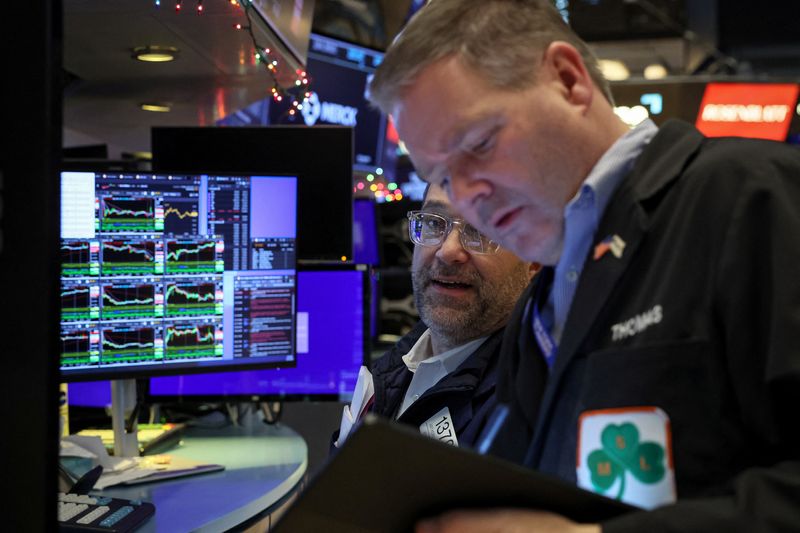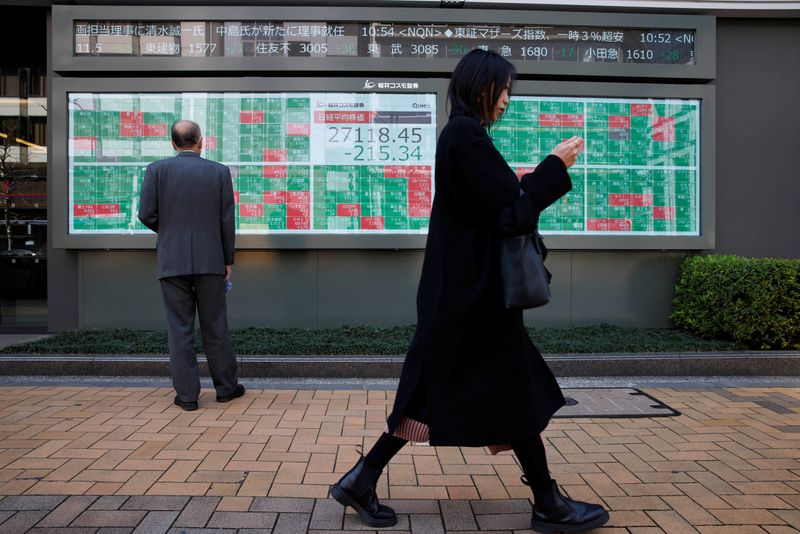By Sinéad Carew
New York (Reuters) -The U.S. dollar rose against the yen on Tuesday after the Bank of Japan kept rates steady while MSCI's global stock index was gaining ground as investors focused on the prospect of U.S. interest rate cuts in 2024.
The S&P 500 rose to within one percentage point of its all-time closing high reached in January of 2022. MSCI's gauge of stocks across the globe touched its highest level since late March 2022.
Meanwhile oil futures extended the previous session's gains after attacks by Yemen's Iran-aligned Houthi militants on ships in the Red Sea (NYSE:SE) disrupted maritime trade and forced companies to reroute their vessels.
The yen lost ground after the Bank of Japan kept its ultra-low interest rates unchanged and maintained its dovish policy guidance, dashing some traders' hopes it would signal a near-term end to negative interest rates.
U.S. Treasury yields edged lower but held above multi-month lows reached last week as investors continued to monitor comments from Federal Reserve officials for indications on when the U.S. central bank is likely to begin cutting interest rates.
Treasury yields have fallen since Fed Chair Jerome Powell took an unexpectedly dovish tone on Wednesday. But the stock market has paid little attention even as several other speakers tried to dampen expectations of rate cuts.
Atlanta Fed President Raphael Bostic said there was no "urgency" for rate cuts given the strength of the U.S. economy and the need to ensure inflation returns to the 2% target.
"Ever since Powell did a pivot people have been in a buying mood. Prior to Wednesday Powell had been a little negative, saying we're not even thinking about thinking about rate cuts," said Chris Zaccarelli, Chief Investment Officer, Independent Advisor Alliance, Charlotte, North Carolina.
"The market heard what they wanted to hear from Powell and they're not really listening to what to rest of the Fed speakers are saying," he added.
On Wall Street, the Dow Jones Industrial Average rose 251.9 points, or 0.68%, to 37,557.92, the S&P 500 gained 27.81 points, or 0.59%, to 4,768.37 and the Nasdaq Composite added 98.03 points, or 0.66%, to 15,003.22.
MSCI's global index rose 0.63% on the day and has gained almost 15% since late October.
Earlier on Tuesday the pan-European STOXX 600 index closed up 0.36% after European Central Bank member Francois Villeroy de Galhau said interest rates should be lowered in 2024 and that inflation should return to the ECB's 2% target by 2025 at the latest.
At the central bank's meeting last week, ECB President Christina Lagarde had pushed back against market bets on imminent rate cuts, but markets were not convinced.
In U.S. Treasuries, benchmark 10-year notes were down 2.3 basis points to 3.933%, from 3.956% late on Monday. The 30-year bond was last down 2.6 basis points to yield 4.0428% while the 2-year note was last was down 1.8 basis points to yield 4.4394%.
In currencies, while the U.S. dollar gained against the yen, it was broadly softer against other majors, weighed down by expectations for interest rate cuts next year.
The Japanese yen weakened 0.79% to 143.90 per dollar, while the dollar index, which measures the greenback against a basket of major currencies, fell 0.33%.
The euro rose 0.5% to $1.0977 while Sterling was last trading at $1.2721, up 0.62% on the day.
Oil prices rose amid the Red Sea turmoil. The United States announced creation of a task force to safeguard Red Sea commerce while Houthis vowed to defy the U.S.-led naval mission and keep hitting Israeli targets in the region.
U.S. crude settled up 1.34% at $73.44 per barrel and Brent finished the session at $79.23, up 1.64%.

In precious metals, gold prices firmed as U.S. dollar and Treasury yields slipped, while investors strapped in for U.S. economic data due this week that could provide more clarity on the Fed's interest rate path.
Spot gold added 0.6% to $2,039.67 an ounce. U.S. gold futures gained 0.81% to $2,038.40 an ounce.
